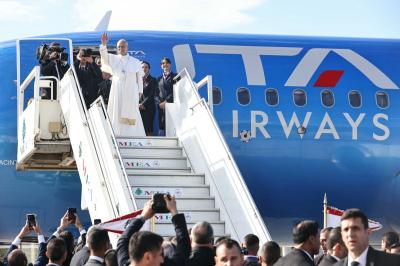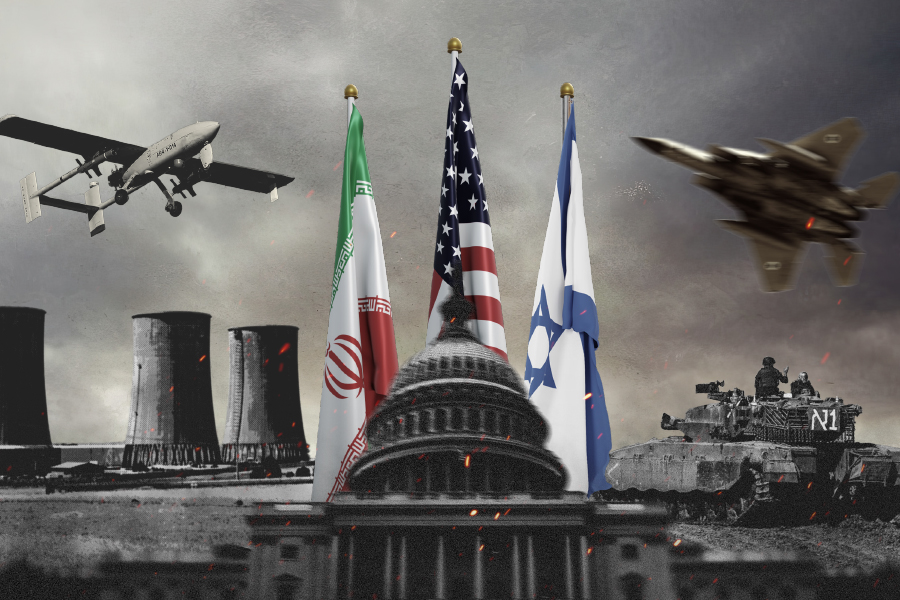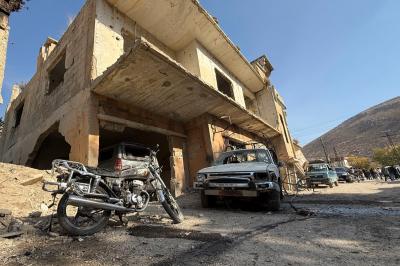Israel’s strikes on Gaza, southern Lebanon, and deep into Syria are not merely reactive responses to immediate security threats. Rather, they have become functional geopolitical tools on a global stage marked by escalating tensions among the world’s major powers.
What appears to be limited in scope—both geographically and temporally—conceals a complex role that Israel plays within a broader strategic architecture being reengineered under the banners of security, deterrence, or counterterrorism.
Pretexts Amid Global Rivalry
Under the pretext of “the right to self-defense,” Israel carries out security and intelligence operations that extend well beyond the boundaries of its national security. These actions form part of a regional framework designed to pressure Iran into abandoning its nuclear ambitions, serving both Israeli interests and those of its international allies.
Israel finds itself at the crossroads of American, Russian, and Chinese interests, acting as a spearhead for safeguarding U.S. strategic objectives in the Middle East. Through its airstrikes, it delivers deterrent messages to Tehran's nuclear program at a time when Washington is increasingly reluctant to engage in direct military confrontation. These strikes allow the U.S. to outsource escalation while avoiding the political and financial costs of direct involvement.
This reflects a deliberate U.S. strategy to manage conflicts within a gray zone—neither war nor peace. Such ambiguity prolongs regional instability, strategically exhausting adversaries and preventing them from reaching effective balance, while simultaneously keeping allies within America’s sphere of influence by fostering a reliance on its security and political umbrella.
Russia, too, adopts a hedging position toward Israeli strikes—neither escalating nor condemning them, despite its military presence in Syria. This suggests the existence of undeclared “tactical understandings” between Moscow and Tel Aviv, brokered under the watchful eye of Washington, aiming to avoid confrontations that might undermine Russia’s regional standing or strategic calculus.
Meanwhile, China remains politically and militarily detached, instead viewing these geopolitical cracks as economic opportunities. As the U.S. and Russia remain entangled in conflict management, Beijing quietly advances its economic projects and influence, especially in regions no longer under the clear control of any one power.
Media Spin, Testing Geopolitical Tools
Western media outlets are often used as parallel structures that reframe Israeli strikes within a ready-made narrative, stripping them of their political and humanitarian contexts. Terms like “precision targeting” and “preemptive strikes” dominate coverage, while there is no mention of civilian suffering and facts are grossly distorted.
Israel’s offensive operations are not solely about deterrence—they serve as live experiments to gauge regional and international reactions. Each airstrike functions as a “pulse check on Moscow,” a “test of Tehran’s patience,” and a reflection of the Arab world’s internal fragility.
Israel analyzes these muted responses and turns them into actionable intelligence, confirming that its operational freedom remains intact. The lack of any serious diplomatic pushback assures Israeli policymakers that their campaigns can continue unimpeded.
Reshaping Region: Iran’s Role
Israeli strikes must be understood within the context of regional and global rivalry with Iran—a nation playing a dual role as both "victim" and resisting power, a counterforce against the emerging world order. Iran is trying to maintain its presence in the geographic space left by a weakened Axis of Resistance, especially after Syria's effective withdrawal from the equation.
Given Israel’s air superiority, Iran resorts to an “asymmetric deterrence” strategy. Aware of its military limitations, Tehran isn’t aiming for victory but rather seeks to keep Israel in a state of perpetual attrition. Iran also views its support for Gaza and the Palestinian resistance as a source of symbolic legitimacy for its regional project—one that simultaneously embarrasses its Arab rivals who have normalized or are considering normalizing ties with Israel.
Thus, Tehran increasingly aligns itself with Chinese and Russian efforts to counterbalance U.S. dominance, seeking to establish a “new model” within a multipolar global order.
On the other hand, Iran’s renewed negotiations with the U.S.—whether on the nuclear file or economic sanctions—pose a latent threat to the Axis of Resistance. Any potential settlement could lead to compromises that weaken Iran’s commitments to its regional allies. Reaching major understandings with Washington might require Tehran to scale back, or even abandon, its support for what remains of the resistance front.
* Former Minister
Please post your comments on:
[email protected]
 Politics
Politics













